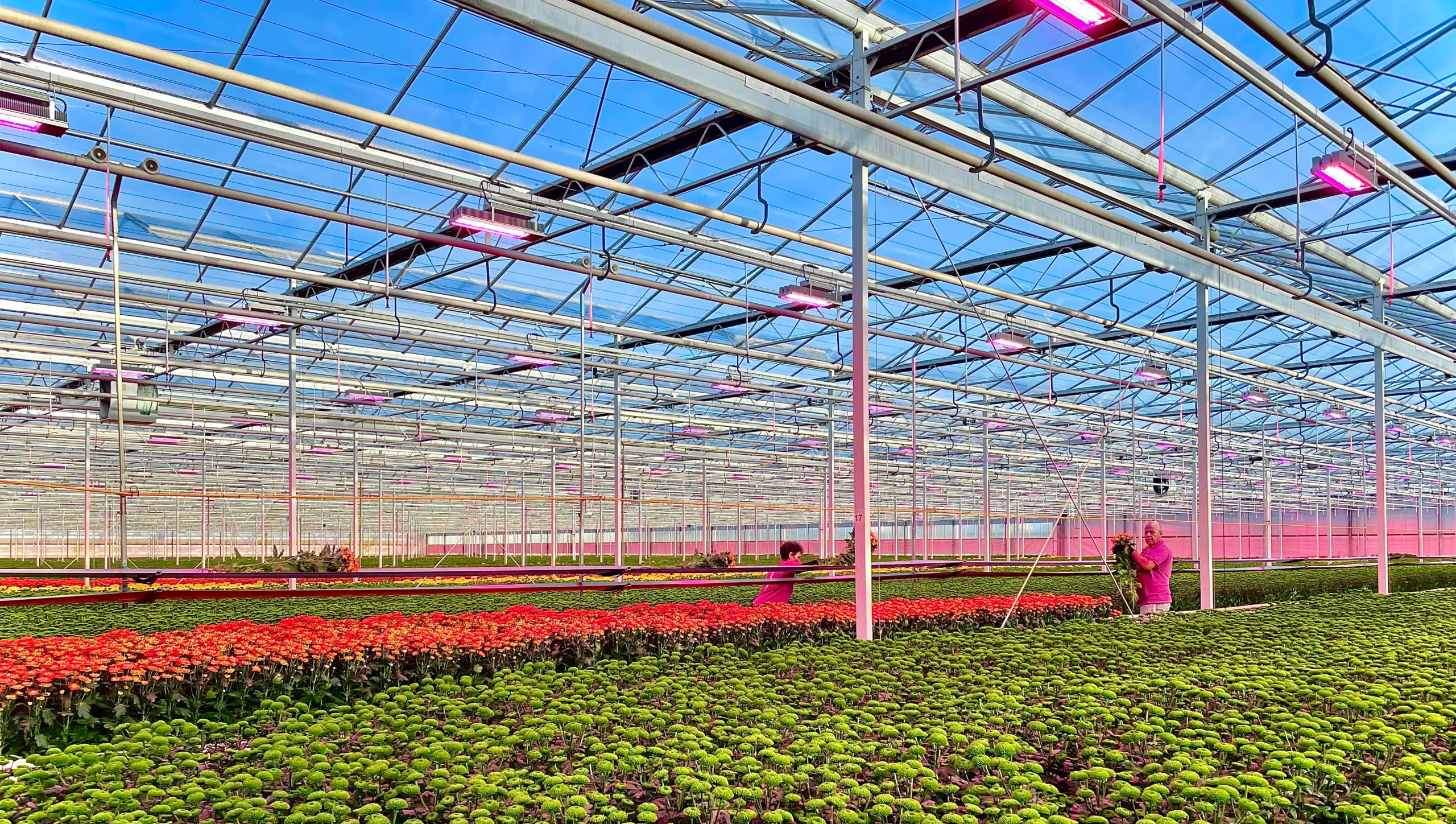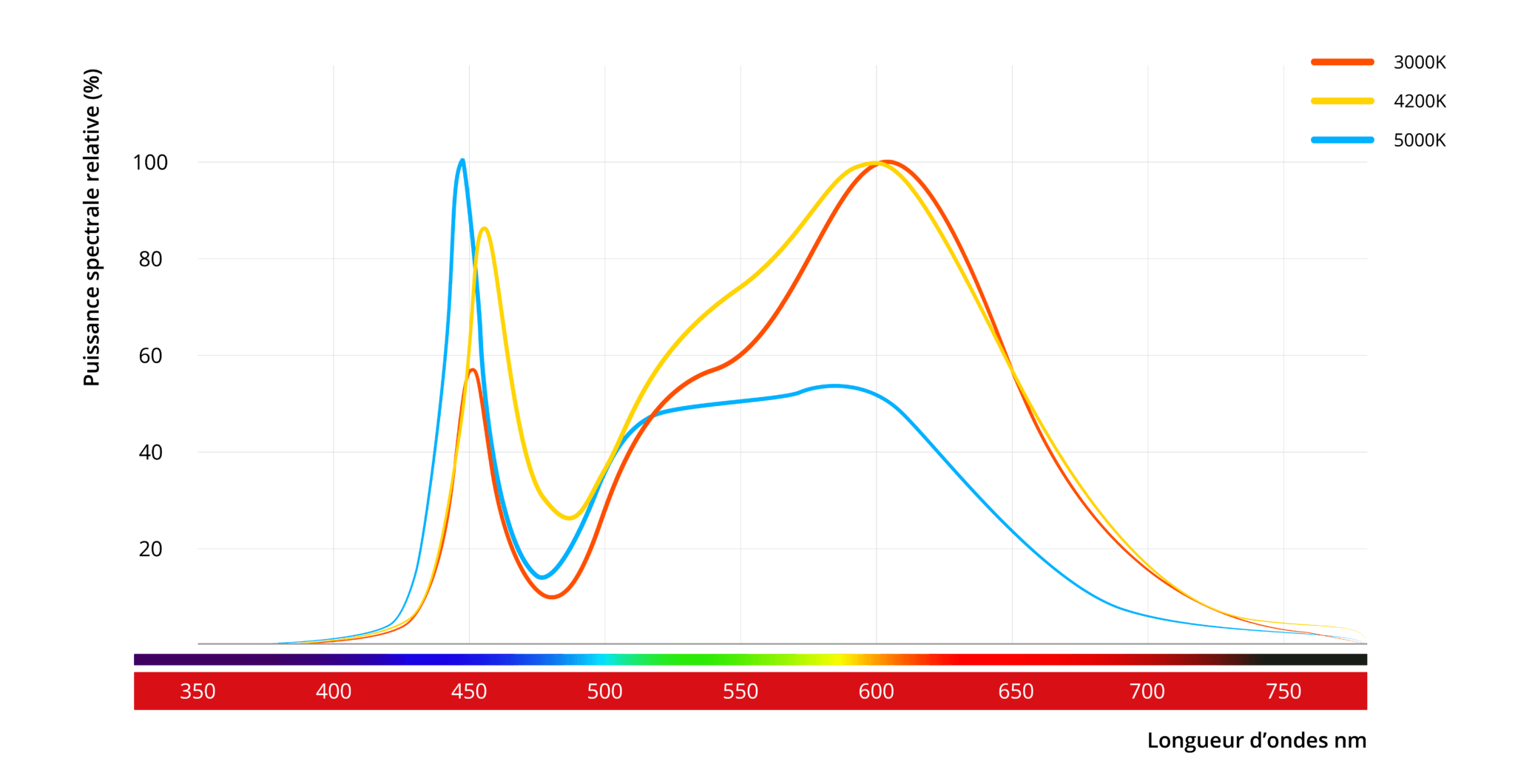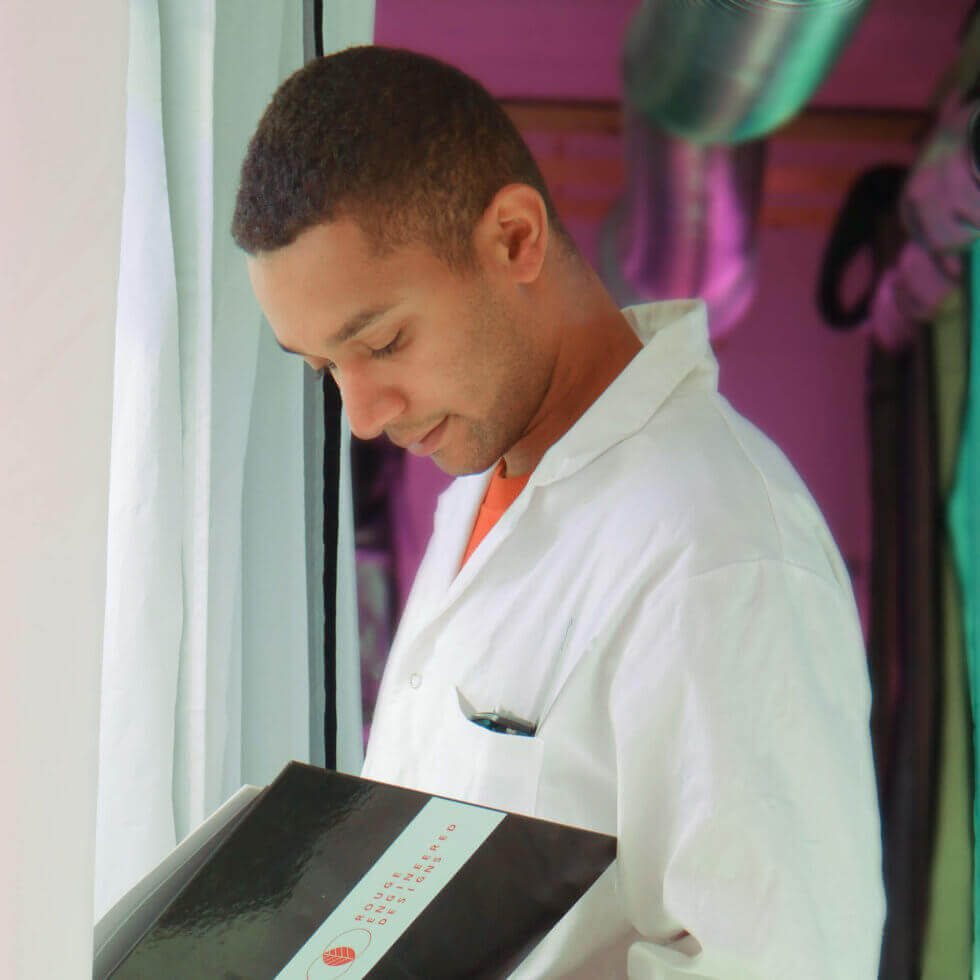
Kelvin for horticultural cultivation.
When buying a light bulb, you may have noticed that Kelvins appear alongside watts.
14 November 2023
What is Kelvin?
When purchasing light bulbs, you may have noticed that alongside watts, there are Kelvin values. While a common concept in the lighting industry, it is less familiar to many of us.
Kelvin (K) is the absolute unit of temperature measurement. It is called absolute because a temperature of 0 K corresponds to the lowest temperature in the Universe. Unlike degrees Celsius, it is not preceded by the word “degree” and is simply expressed as “Kelvin.” The scale used is the same as that of degrees Celsius but shifted downward by 273.15 units.

Kelvin in lighting.
In the field of lighting, Kelvin is used to characterize the color temperature. Be cautious of shortcuts, as illustrated in the table below: the lower the Kelvin value, the warmer the color. Conversely, the higher the Kelvin value, the cooler the color.
Why? Scientists have chosen to define white light by comparing it to the hue that a black body takes on when heated to different temperatures. The sunlight at noon represents a temperature of 6,500K.

Kelvin for cultivation.
The light spectrum varies according to the chosen white temperature. Each plant has specific needs and it is essential to understand the plant’s requirements to apply an appropriate spectrum. The graph below illustrates the spectra received for different Kelvin temperatures.

Indeed, by increasing the Kelvin temperature, the blue-to-red ratio in the light spectrum also increases.


